Mexico's Attempt to Extend its Continental Shelf Beyond 200 Nautical Miles Serves as a Model for the International Community
In June 2000, the United States and Mexico signed a treaty for the delimitation of the continental shelf in the western Gulf of Mexico beyond 200 nautical miles. When the treaty was signed, both countries realized that the interpretation and implementation of the treaty depended on the scientific and legal certainty of determinations regarding how far their respective submarine continental shelves extended. On 13 December 2007, Mexico submitted information to the Commission on the Limits of the Continental Shelf regarding the limits of the continental shelf beyond 200 nautical miles from the baselines from which the breadth of the territorial sea is measured in relation to the Western Polygon in the Gulf of Mexico. Mexico sought an extension of its continental shelf in the Western Polygon based on international law, UNCLOS, and bilateral treaties with the United States, in accordance with Mexico’s domestic legislation. Peaceful delimitation of maritime borders is essential to maintaining world order. Mexico is a country of peace, and has attempted to use international law as a tool to represent its interests. Mexico has meticulously adhered to a series of international precedents and treaties to support its claim. Moreover, Mexico has gathered significant scientific evidence to verify its sovereign authority over its maritime areas. In the author’s opinion, the United States should recognize these claims and show the world that the U.S. stands for fairness, equity and the rule of law.





























